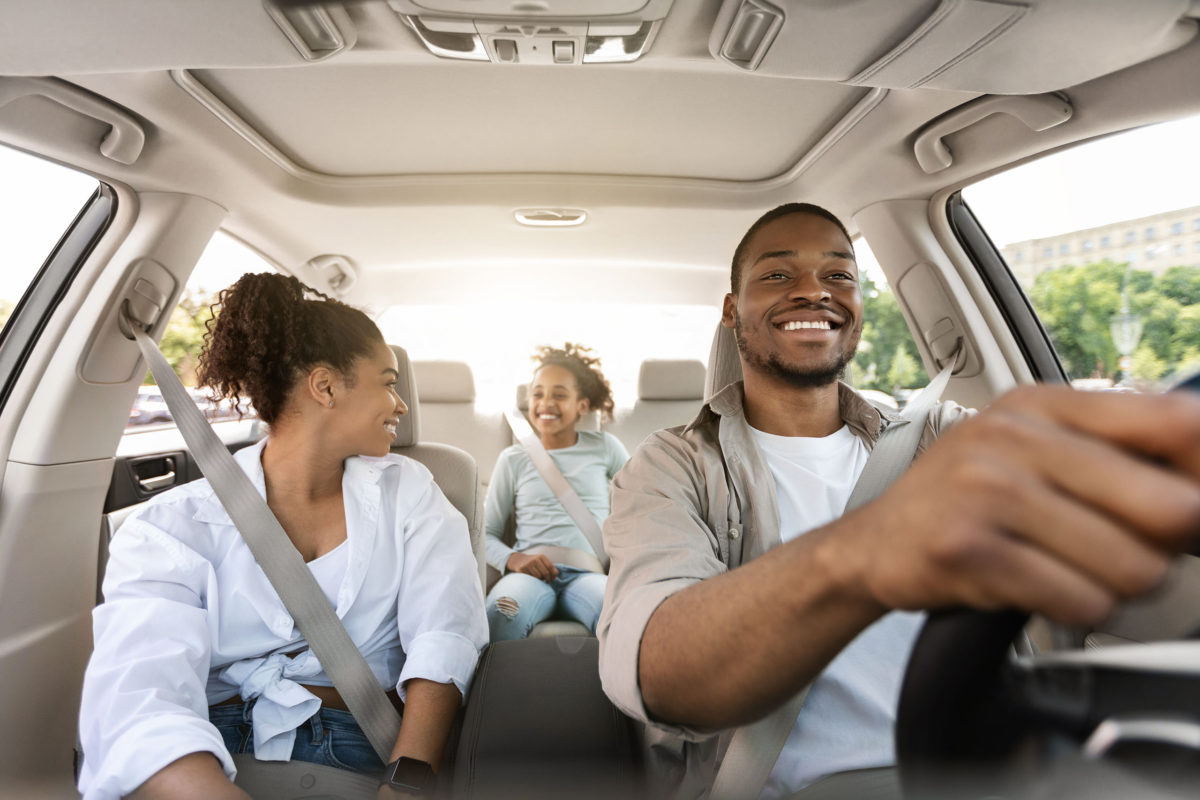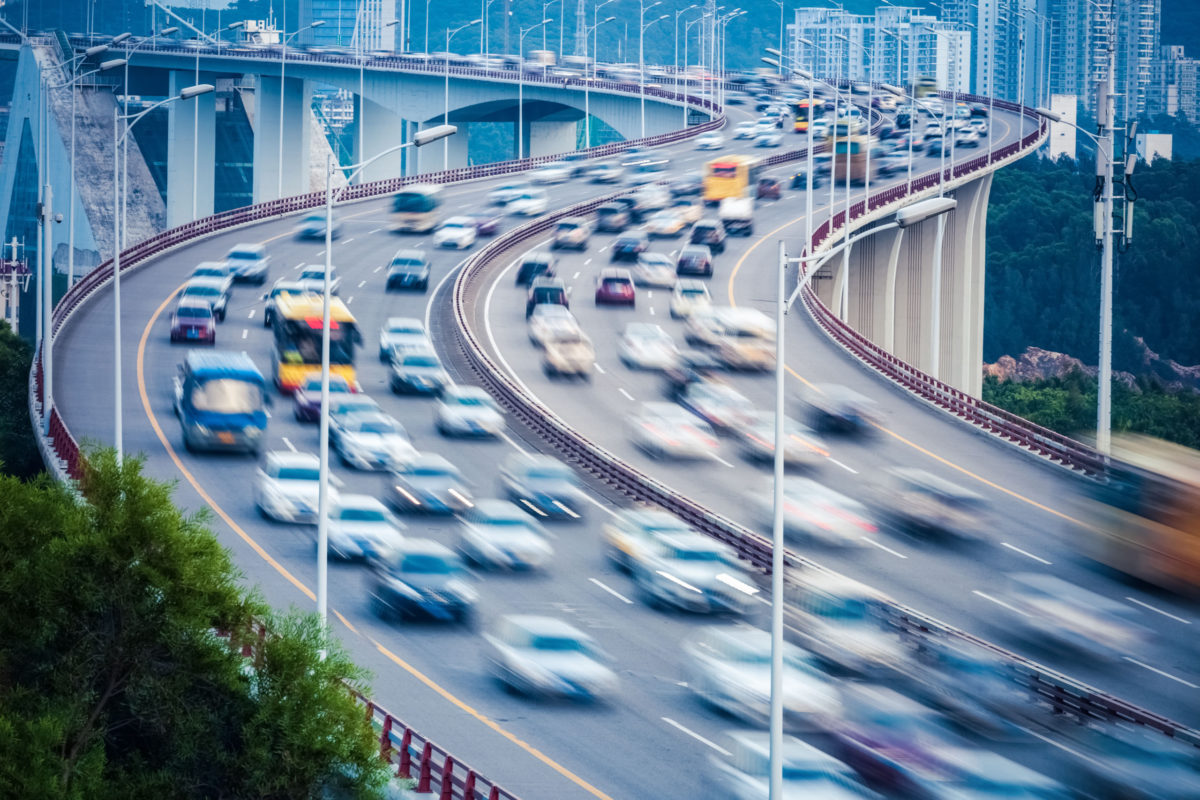Walking the Line:
Reducing Pedestrian Casualties Through Safer Streets
October is National Pedestrian Safety Month. In honor of safety awareness, the U.S. Department of Transportation’s National Highway Traffic Safety Administration (NHTSA) is urging drivers to slow down and be on alert for pedestrians.
“Walking is one of the best things you can do for both your mental and physical health, and also for the environment, but where pedestrians and vehicle-traffic intermix, the results can be crashes resulting in injuries and deaths.”
— Dr. David Sleet, a Senior Associate at Bizzell US
While walking has many personal, physical and environmental benefits, it is not without risk. Going by foot can improve local economies and enhance social and community engagement, leading to more vibrant, resilient, and livable spaces. Nevertheless, precautions need to be taken to keep pedestrians safe.
Pedestrian Casualties
According to the Governors Highway Safety Association (GHSA) 2021 data, taken from the National Highway Safety Administration (NHTSA), pedestrian casualties have significantly increased 77% since 2010 (GHSA, 2023).
The NHTSA Traffic Safety Facts 2022 Data reveals the highest number of driver-caused pedestrian fatalities since 1981, with 7,522 pedestrian deaths in 2022 — that means one pedestrian was killed every 70 minutes and injured every 8 minutes in traffic crashes, 48% of which involved alcohol use (NHTSA, 2024).
“Every day, 20 people go for a walk and do not return home. These are people living their daily lives — commuting to and from school and work, picking up groceries, walking the dog, getting some exercise who died suddenly and violently.”
— GHSA Chief Executive Officer Jonathan Adkins. (GHSA, 2023)
Risk Factors
Road safety experts report common factors in driver-caused pedestrian accidents (GHSA, 2023):
- Most pedestrian accidents occur at night. In 2021, reports show 77% of pedestrian crashes occurred in the dark.
- Most pedestrian crashes are caused by passenger vehicles; however, the past decade has seen a 120% increase in crashes involving speeding sports utility vehicles (SUVs)
- Most pedestrian accidents occur in locations without sidewalks.
- Most pedestrian accidents are caused by speeding vehicles, with 90% driving at 58 mph.
Pandemic Frenzy
NBC News reports that we are still experiencing the trend of “pandemic-fueled risky driving” that caused fatal car accidents to increase more than10% in 2022. Despite the reduced traffic during the pandemic, car crashes increase as an increased number of people drove more than usual and engaged in riskier behavior amidst the open highways and lack of law enforcement due to fear of Covid safety and racial profiling. Drivers felt like they could take more risks like speeding, not wearing seatbelts, texting while driving, running red lights, driving aggressively and driving under the influence of alcohol or drugs (Bendix, 2022). As the pandemic subsided and law enforcement returned to roadways the trend of risky driving continues to persist.
Crossing Safely
cording to the Federal Highway Administration (FHA), uncontrolled pedestrian crossing, or walkway intersections without traffic controls, make pedestrians especially vulnerable to fatal accidents. The FHA recommends setting traffic controls that calculate adequate pedestrian crossing time at an average walking speed of 3.5 feet per second and less than 3.5 feet per second for wheelchairs or slower walkers (FHA, 2028). Having and using proper controlled crosswalks keeps pedestrians safer.
Safety Practices
As a way to curb risks, the NHTSA urges people to adopt the Safe System Approach to prevent crashes and minimize injuries and deaths. (U.S. DOT, 2024):
- Safer People: Everyone behaving responsibly (including drivers, pedestrians and cyclists) to prioritize conditions that get everyone to their destinations unharmed.
- Safer Speeds: Promote safe speeds and roadway environments through a combination of thoughtful, equitable, context-appropriate roadway design, appropriate speed-limit setting, targeted education, outreach campaigns and enforcement.
- Safer Roads: Design safer roadways — with controlled pedestrian crossing, designated crosswalks, bike paths, and sidewalks — to account for human mistakes and injury tolerances, encourage safe behaviors, and protect vulnerable users.
- Safer Vehicles: Expand technology that helps to prevent crashes and minimize the impact of crashes on drivers, pedestrians and cyclists.
- Post-Crash Care: Enhance rapid access to emergency medical care and safer environment for first responders to improve survivability for everyone.
Halloween Safety
For many Americans, Halloween night is the highlight of October family fun and festivities. During this holiday, drivers should be especially cautious and alert of trick-or-treating families with small, costumed children popping out of unexpected places. These kids may be unaware of surrounding traffic and may quickly dart into the street. Slower vehicle speeds and greater roadway awareness during Halloween can save lives.
Shared Responsibility
Keeping pedestrians safe and alive is a shared responsibility for everyone. Bizzell is urging drivers to look out for pedestrians, slow down, and drive with pedestrian awareness. Pedestrians should take precautions to lower risks of jeopardizing safety.
“At Bizzell US, we want to help ensure that pedestrians are safe as they use sidewalks, when they cross the street, or when they get on or off public transit. Anywhere that people walk or bike, they should be able to do so without fear that they’ll be injured.”
— Dr. William Scarbrough of Bizzell US
SOURCES CITED:
Bendix, Aria (2022) Deadly car crashes hit a high in early 2022. Pandemic-fueled risky driving may be to blame, NBC News, Retrieved from https://www.nbcnews.com/health/health-news/fatal-car-crash-increase-risky-driving-rcna43969
Federal Highway Administration (2009 Edition) Manual on Uniform Traffic Control devices for Streets and Highways, U.S. Department of Transportation, Retrieved from https://mutcd.fhwa.dot.gov/pdfs/2009r1r2r3/mutcd2009r1r2r3edition.pdf
Federal Highway Administration ((2018) Guide for Improving Pedestrian Safety at Uncontrolled Crossing Locations, U.S. Department of Transportation, Retrieved from https://www.fhwa.dot.gov/innovation/everydaycounts/edc_5/docs/STEP-guide-improving-ped-safety.pdf
Governors Highway Safety Association (2023) Drivers Hit and Killed More Than 7,500 Pedestrians Last Year, Most Since 1981, New Projection Shows [Press Release], Retrieved from https://www.ghsa.org/resources/news-releases/GHSA/Pedestrian-Spotlight-Full-Report23
National Highway Traffic Safety Association (2024) Pedestrian Safety, Retrieved from https://www.nhtsa.gov/road-safety/pedestrian-safety
U.S. Department of Transportation (2024) What Is a Safe System Approach? Retrieved from https://www.transportation.gov/NRSS/SafeSystem




